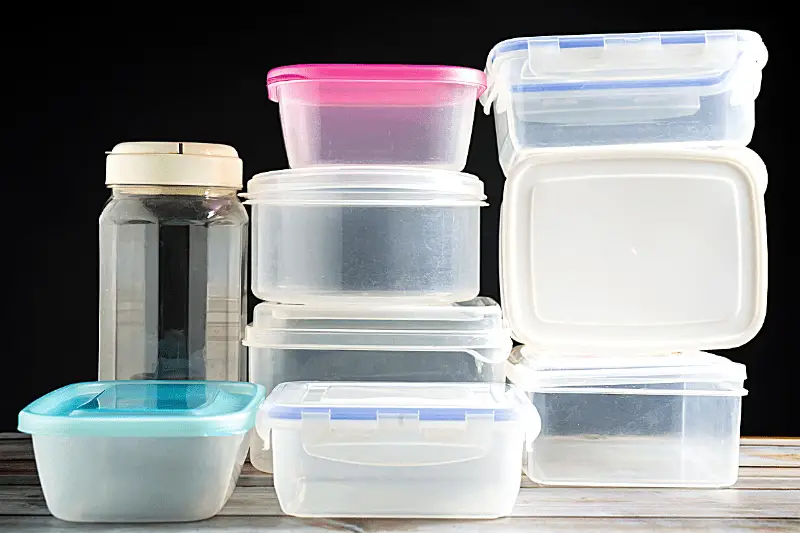Pickling is a popular method of preserving various types of foods, including onions.
Traditionally, glass jars have been the container of choice for pickling.
But as plastic jars have become more prevalent, many people wonder if it’s possible to pickle onions in them.
This article will explore the pros and cons of using plastic jars for pickling onions and provide step-by-step instructions on how to do so safely.

Understanding Pickling and Jars
Before diving into the details of pickling onions in plastic jars, let’s briefly discuss the pickling process and why jars are important in preserving food.
The Pickling Process
Pickling involves submerging food in vinegar, salt, and various spices. This acidic solution prevents the growth of harmful bacteria, thus preserving the food and extending its shelf life. The pickling process also imparts the preserved food a unique, tangy flavor.
Traditional Jars for Pickling
Traditionally, glass jars have been used for pickling. These jars are ideal for the pickling process because they are non-porous, non-reactive, and can withstand high temperatures during the sterilization process. Glass jars also have tight-fitting lids that create a seal to keep out air and bacteria.
Pros and Cons of Plastic Jars
Now, let’s explore the advantages and disadvantages of using plastic jars for pickling onions.
Advantages of Plastic Jars
- Lightweight: Plastic jars are lighter than glass jars, making them easier to transport and store.
- Durability: Plastic jars are less likely to break or crack compared to glass jars.
- Cost-effective: Plastic jars are generally more affordable than their glass counterparts.
Disadvantages of Plastic Jars
- Reactivity: Some plastics can leach chemicals into the pickling solution, potentially affecting the taste and safety of the pickled onions.
- Heat Resistance: Many plastic jars cannot withstand high temperatures required for sterilization, making it difficult to ensure the jars are properly sanitized before use.
- Seal Quality: Plastic jars may not seal as tightly as glass jars, allowing air and bacteria to enter the jar and spoil the pickled onions.
Choosing the Right Plastic Jars for Pickling
While plastic jars can be used for pickling onions, it’s crucial to select the appropriate type of plastic to ensure the safety and quality of the end product.
Types of Plastics to Avoid
Avoid plastics that contain harmful chemicals, such as BPA (bisphenol-A) and phthalates. These chemicals can leach into the pickling solution and pose potential health risks.
Food-Grade Plastics and BPA-Free Options
Choose food-grade plastic jars specifically designed for food storage. Look for BPA-free options that are labeled as safe for food use. High-density polyethylene (HDPE), low-density polyethylene (LDPE), and polypropylene (PP) are examples of food-safe plastics that are suitable for pickling.
Steps to Pickle Onions in Plastic Jars
Once you’ve selected the appropriate plastic jars, follow these steps to pickle your onions safely:
Preparing the Onions
- Clean and peel the onions, then slice them into even-sized pieces.
- Blanch the onions in boiling water for 1-2 minutes to soften them slightly. Drain and let them cool.
Creating the Pickling Solution
- Combine equal parts vinegar and water in a saucepan. Add salt, sugar, and your desired pickling spices.
- Bring the mixture to a boil, stirring occasionally, until the salt and sugar have dissolved. Remove from heat and let it cool.
Filling the Plastic Jars
- Place the prepared onions in the plastic jars, leaving about half an inch of headspace at the top.
- Pour the cooled pickling solution over the onions, ensuring they are completely submerged.
- Seal the jars with tight-fitting lids.
Storing the Pickled Onions
- Store the jars in a cool, dark place for at least 4 weeks to allow the flavors to develop.
- Once opened, keep the jars refrigerated and consume the pickled onions within 2-3 months.
Safety Concerns and Recommendations
Potential Health Risks
Using plastic jars for pickling onions can pose potential health risks if chemicals from the plastic leach into the pickling solution. Always opt for food-grade, BPA-free plastics to minimize these risks.
Alternatives to Plastic Jars
While plastic jars can be used for pickling onions, glass jars are still the preferred choice due to their non-reactivity and heat resistance. If you have concerns about using plastic jars, consider using glass jars instead.
Conclusion
In summary, it is possible to pickle onions in plastic jars, provided that you use food-grade, BPA-free containers.
However, traditional glass jars remain the preferred choice due to their non-reactivity and ability to withstand high temperatures during the sterilization process. If you do choose to use plastic jars, follow the steps outlined in this article to ensure the safety and quality of your pickled onions.
FAQs
- Can you use any type of plastic jar for pickling onions?No, it’s essential to use food-grade, BPA-free plastic jars specifically designed for food storage.
- How long do pickled onions last in plastic jars?When properly stored in a cool, dark place, pickled onions in plastic jars can last up to 4-6 months unopened. Once opened, they should be refrigerated and consumed within 2-3 months.
- Do plastic jars affect the taste of pickled onions?Plastic jars may potentially affect the taste if harmful chemicals leach into the pickling solution. To minimize this
